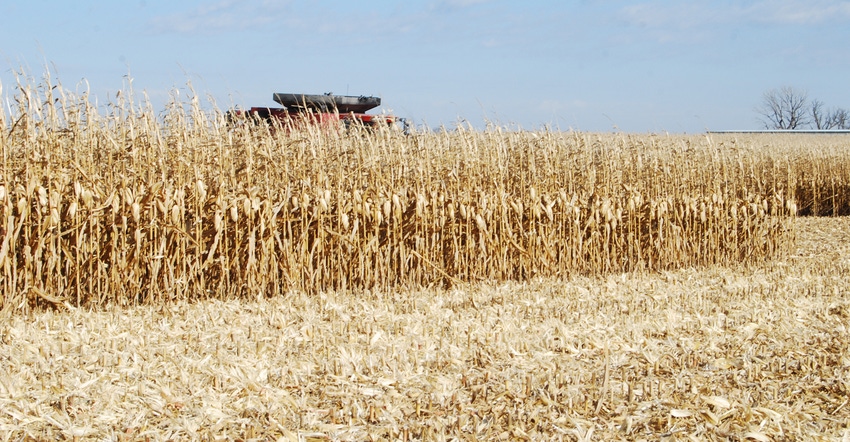September 28, 2018

Some areas of Iowa have swung between warm-and-dry and cool-and-wet weather within a week this harvest season. With more rain in the forecast, farmers wonder how fast corn will dry down in the field in the coming weeks.
What are the factors associated with corn grain dry down? In a nutshell, after the crop has reached maturity, the rate of grain drydown is largely driven by air temperature and relative humidity.
That’s the answer from Iowa State University Extension cropping systems agronomist Mark Licht, and his agronomy colleague at ISU, Sotirios Archontoulis. Here’s what they learned about corn drying down on the stalk in the field:
• Cool, wet weather takes longer to dry corn. Corn grain drydown is typically not a concern during a warm, dry fall. Grain moisture often reaches near 15% by mid-October. However, with cool, wet weather, it may take until early to mid-November to reach 15%, say the ISU agronomists.
They ran a computer model — a simulated drydown of hypothetical mid-September maturing crops during two contrasting weather years 1999 (warm-dry) and 2009 (cool-wet).
“Measurements from our field experiments in Ames, Iowa, show corn grain moisture to be between 23% and 30% as of Sept. 20,” Archontoulis says. “Assuming 34% grain moisture at black layer, early-September maturing corn should be getting close to 20% moisture as of the last week of September, while mid-September maturing corn should be just below 29%.”
• Dry the corn down quickly after harvesting. “Our projections using historical weather data puts grain moisture in Ames between 18% and 22% by Oct. 1,” he said. “Corn grain may not reach 15% moisture until the second week of October. To avoid harvest delays, we recommend making plans to dry corn postharvest, especially if weather shifts back to cool and wet. You don’t want to hold wet corn very long, sitting in a wagon or bin, before drying it.”
Cooler, wetter weather conditions have implications on not only grain moisture but also grain quality, the ISU agronomists warn. “It should be expected that ear molds will increase and may lead to mycotoxins,” Licht says.
“Because of this, it’s recommended that farmers scout fields and prioritize for early harvest those at highest risk of ear mold proliferation,” he adds. “This is extremely important for late-planted, late-maturing crops where attaining grain moisture near 15% in the field will become less likely as we move into late October and early November.”
Source: Iowa State University
You May Also Like




